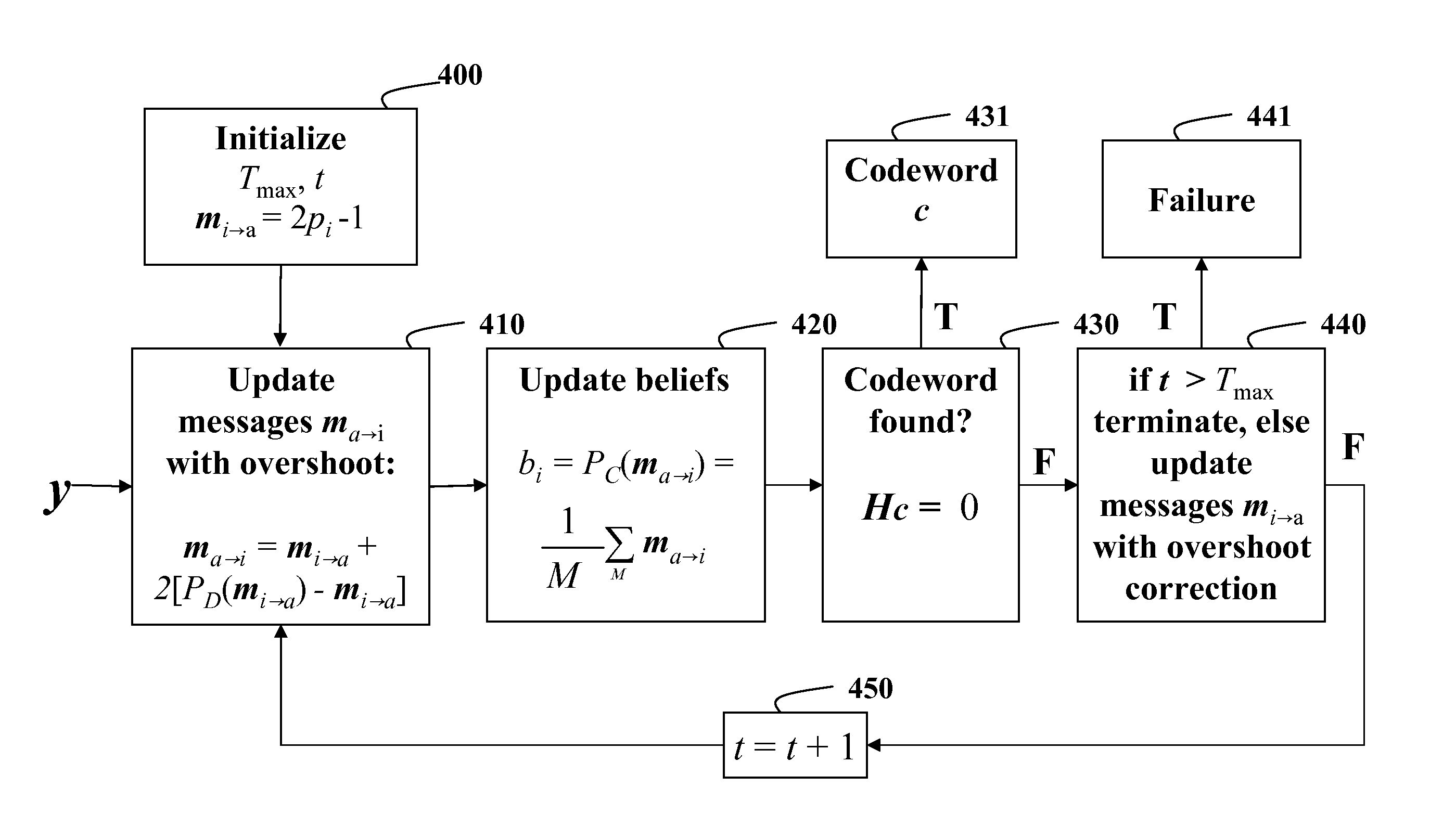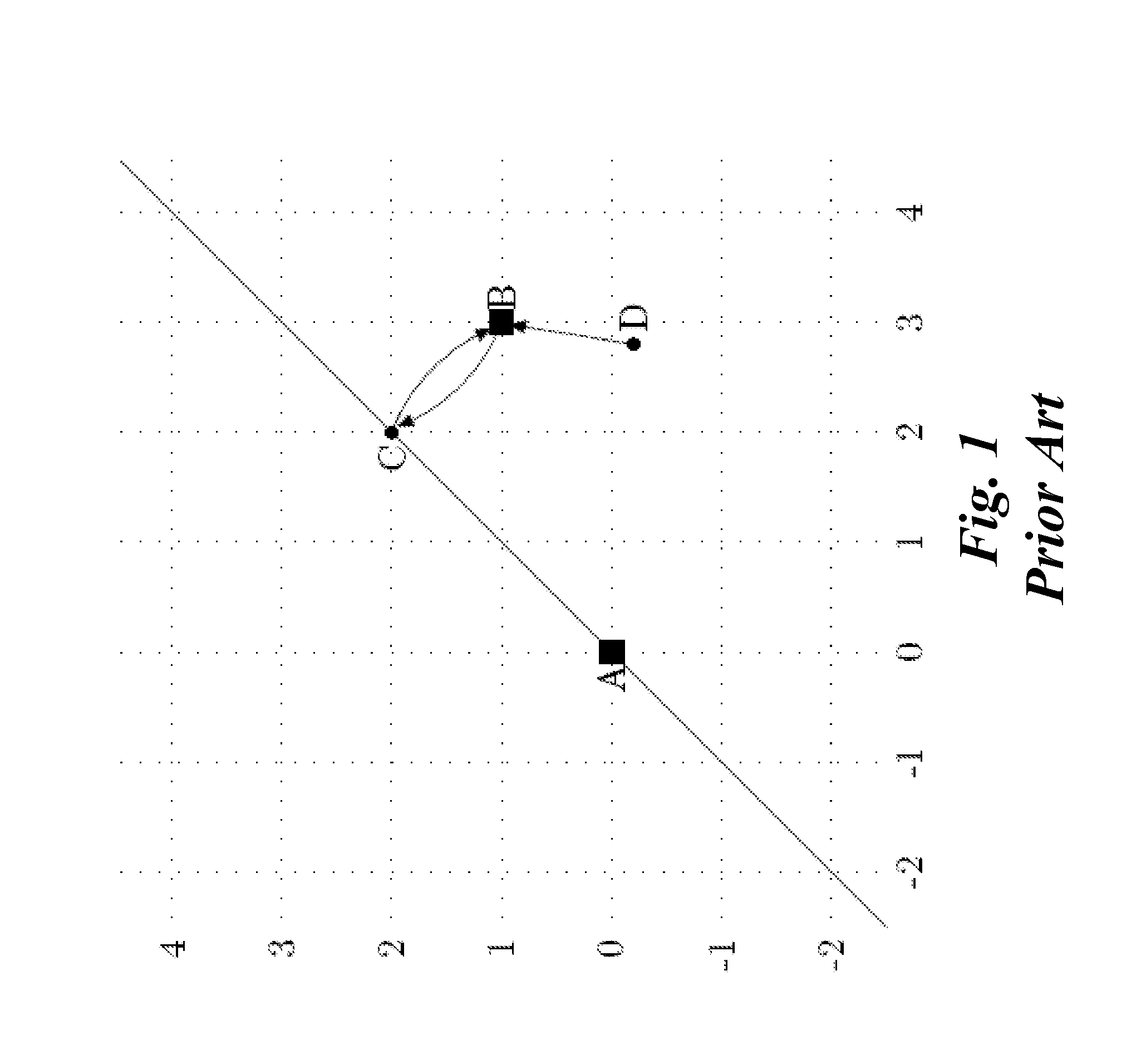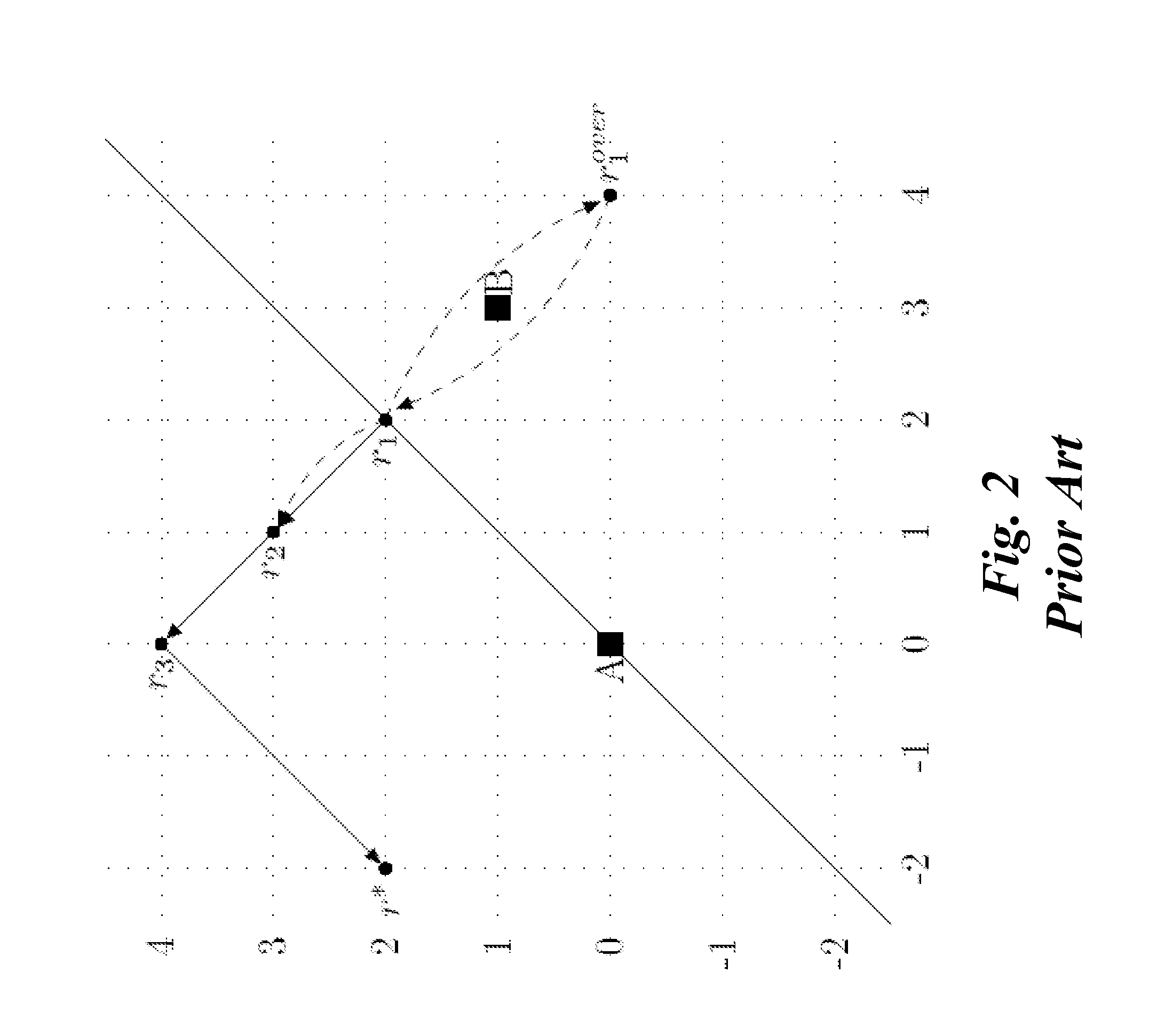Method and System for Decoding Graph-Based Codes Using Message-Passing with Difference-Map Dynamics
a graph-based code and message-passing technology, applied in the field of decoding graph-based codes, can solve the problems of significant error floor, low error rate of decoders, and inability to achieve the same in the high-snr regime, and achieve the effect of improving the error floor
- Summary
- Abstract
- Description
- Claims
- Application Information
AI Technical Summary
Benefits of technology
Problems solved by technology
Method used
Image
Examples
Embodiment Construction
[0039]The embodiments of our invention provide methods for decoding graph-based codes, including low-density parity check (LDPC) codes, using novel belief propagation (BP) decoders. The codes can be used to store and communicate data. More specifically, our invention is well suited for high-density storage, and high data rates, such as magneto-optic storage media, and fiber-optic communication systems.
[0040]Because we have done extensive work on LDPC codes and BP decoders, see U.S. Pat. Nos. and Publications 7,376,173, 7,373,585, 7,191,376, 7,103,825, 7,103,818, 6,857,097, 6,771,197, 20080316069, 20080235515, 20080052594, 20070217432, 20070174633, 20060123241, 20060048038, and numerous scientific papers, we were intrigued whether any of the principles of the D&C method could be applied to LDPC codes and BP decoders. We note that there is nothing in the conventional D&C method that anticipates the elements of the BP decoders of our invention.
[0041]We were particularly curious whether...
PUM
 Login to View More
Login to View More Abstract
Description
Claims
Application Information
 Login to View More
Login to View More - R&D
- Intellectual Property
- Life Sciences
- Materials
- Tech Scout
- Unparalleled Data Quality
- Higher Quality Content
- 60% Fewer Hallucinations
Browse by: Latest US Patents, China's latest patents, Technical Efficacy Thesaurus, Application Domain, Technology Topic, Popular Technical Reports.
© 2025 PatSnap. All rights reserved.Legal|Privacy policy|Modern Slavery Act Transparency Statement|Sitemap|About US| Contact US: help@patsnap.com



